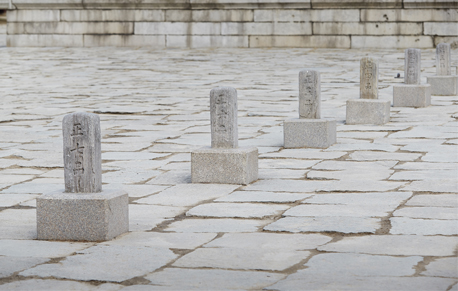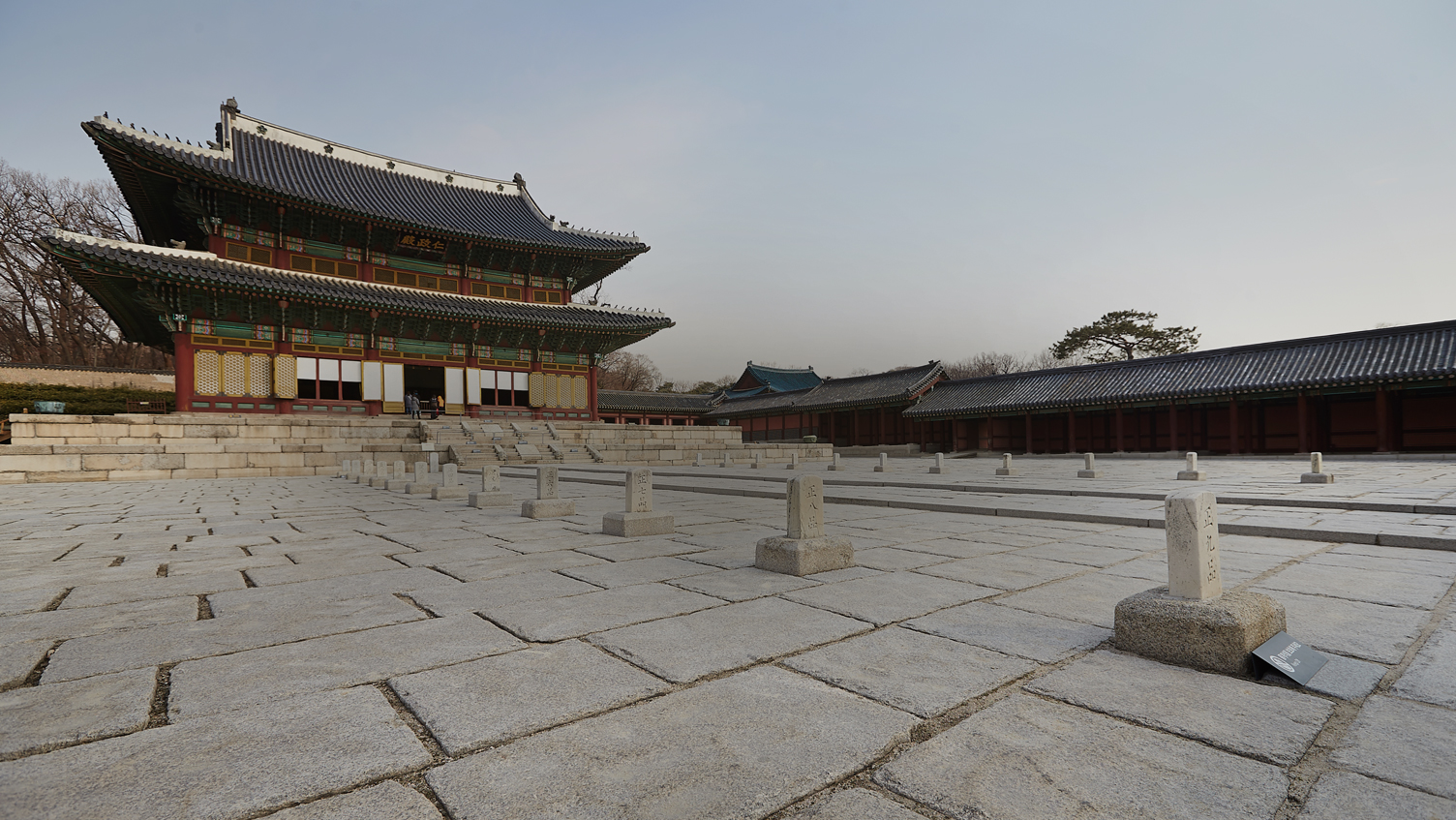
and Changdeokgung was built as a secondary palace to the east of Gyeongbokgung.
These two palaces not only feature outstanding architectural aesthetics of the time, but also embody the scientific spirit of Korean scholars.
Visitors are welcome to walk around the royal palaces and experience the glorious scientific achievements
as well as the proud history of science and technology of the Joseon Dynasty.
Gyeongbokgung Palace : outstanding architectural aesthetics of the Joseon era
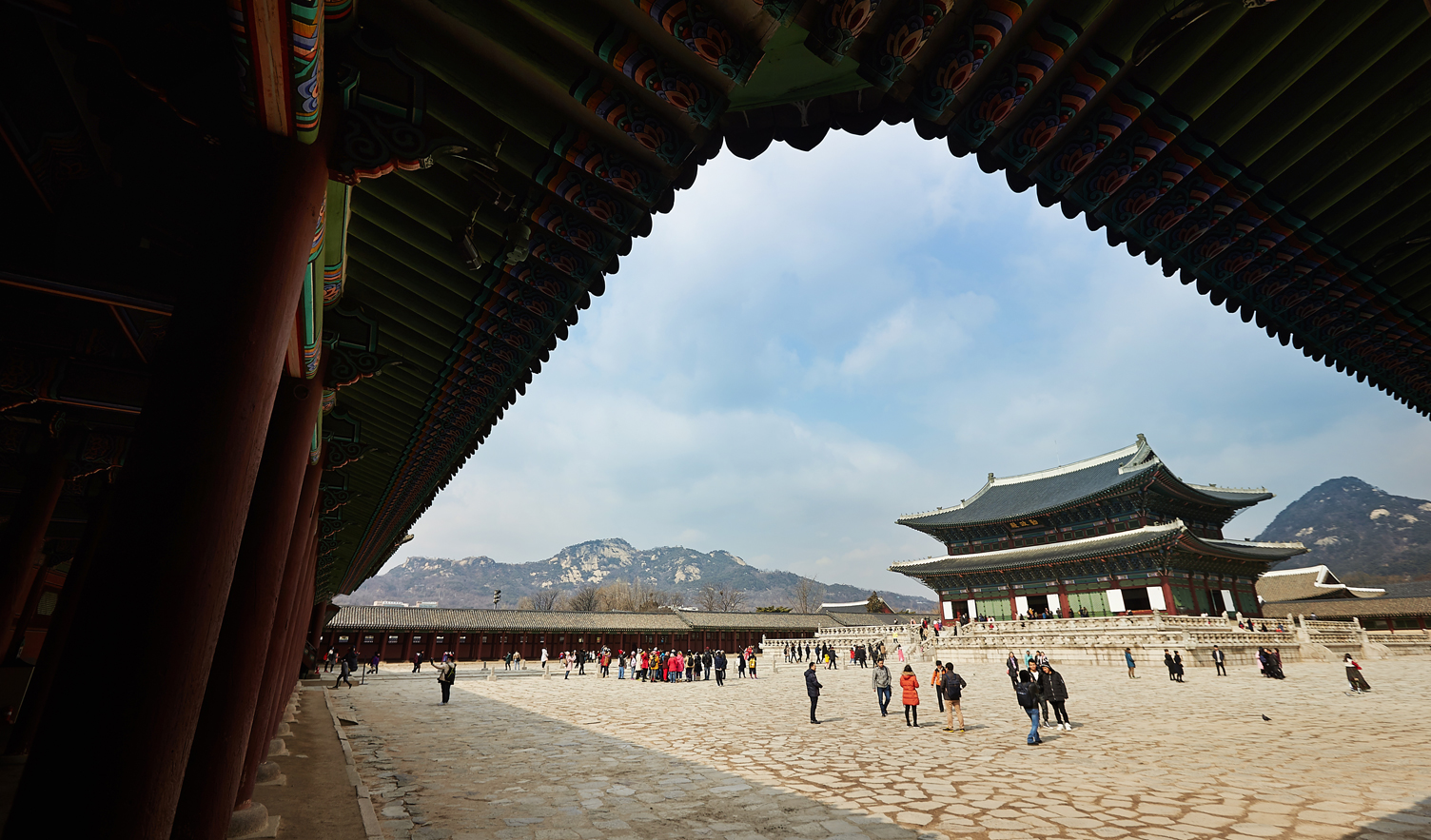
and has been regarded as the most beautiful royal palace so far.
Many believe that the palace is most beautiful when viewed at 45 degrees from the left.
From the left side, the palace with curving lines and the mountain behind the buildings represent the harmony of architecture and nature.
Entering into the palace, visitors can see the dignified Geunjeongjeon Hall, “Geunjeong” means “working diligently with politics for the benefit of the people”. The king’s chair inside the hall sits in front of the majestic painting of “Sun and Moon and Five Peaks,” which symbolizes the king’s authority. The sun refers to the king, the moon to the queen, and the five peaks to the entire land the king has to rule and take care of. Jojeong, the courtyard for hosting major national events, is covered with rank stones that court officials stood by and uneven stone pavement made from granite. This stone pavement covering the courtyard hints at the wisdom of Korean ancestors. It not only prevented sun reflection on days with strong sunshine, but also slowed the speed of running rainwater on days with heavy rain. It also kept court officials in leather shoes from slipping on rainy days. The rings driven into the ground were used to put up an awning on rainy or bright days.
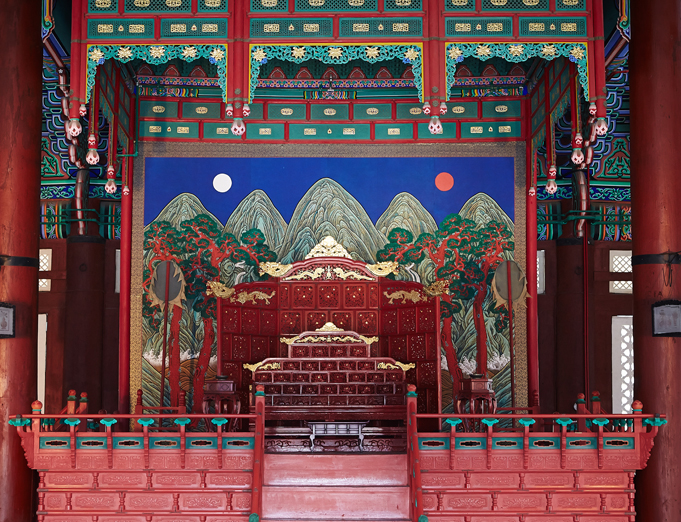
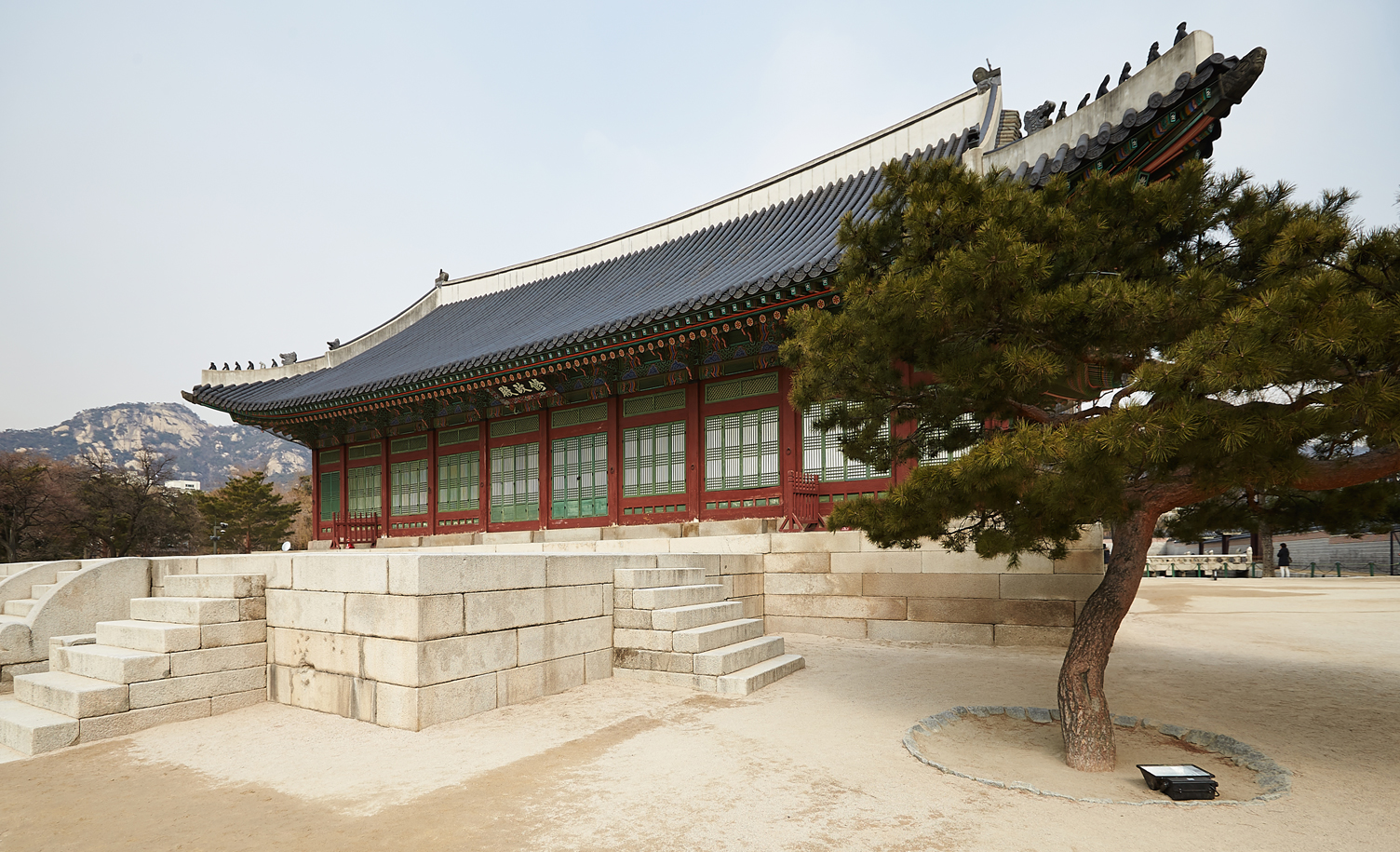
This building is often associated with the well known anecdote about the king :
on a cold winter night, King Sejong saw the light was on inside the building even after midnight and
took off his overcoat and told his courtier to cover Shin Suk-ju, who was sleeping, with it.
With a strong belief that science and technology was imperative for building a strong nation, King Sejong contributing to the birth of many technologies.
In particular, the famous scientist Jang Yeong-sil invented a number of tools and devices for the future generations.
In front of Sujeongjeon Hall stands a stone marker that indicates the former site of Borugak Pavilion, where Jang Yeong-sil made a water clock called Jagyeognu. The pavilion was used as a government office that supervised the new standard clock for Joseon. Other inventions include a rain gauge to measure the amount of rainfall in a container; a celestial globe to observe the movement and location of celestial bodies; and a sundial called Angbuilgu, which uses a cauldron-like hemispheric shape to read time based on the location of shadows under the sun. Another notable heritage is Punggidae, a pedestal with a flag to measure the wind’s force and direction.
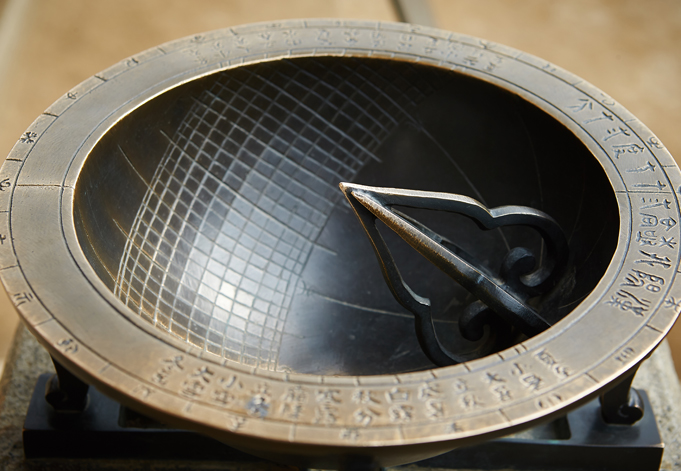
Hyangwonjeong Pavilion, the origin of Korea’s electricity
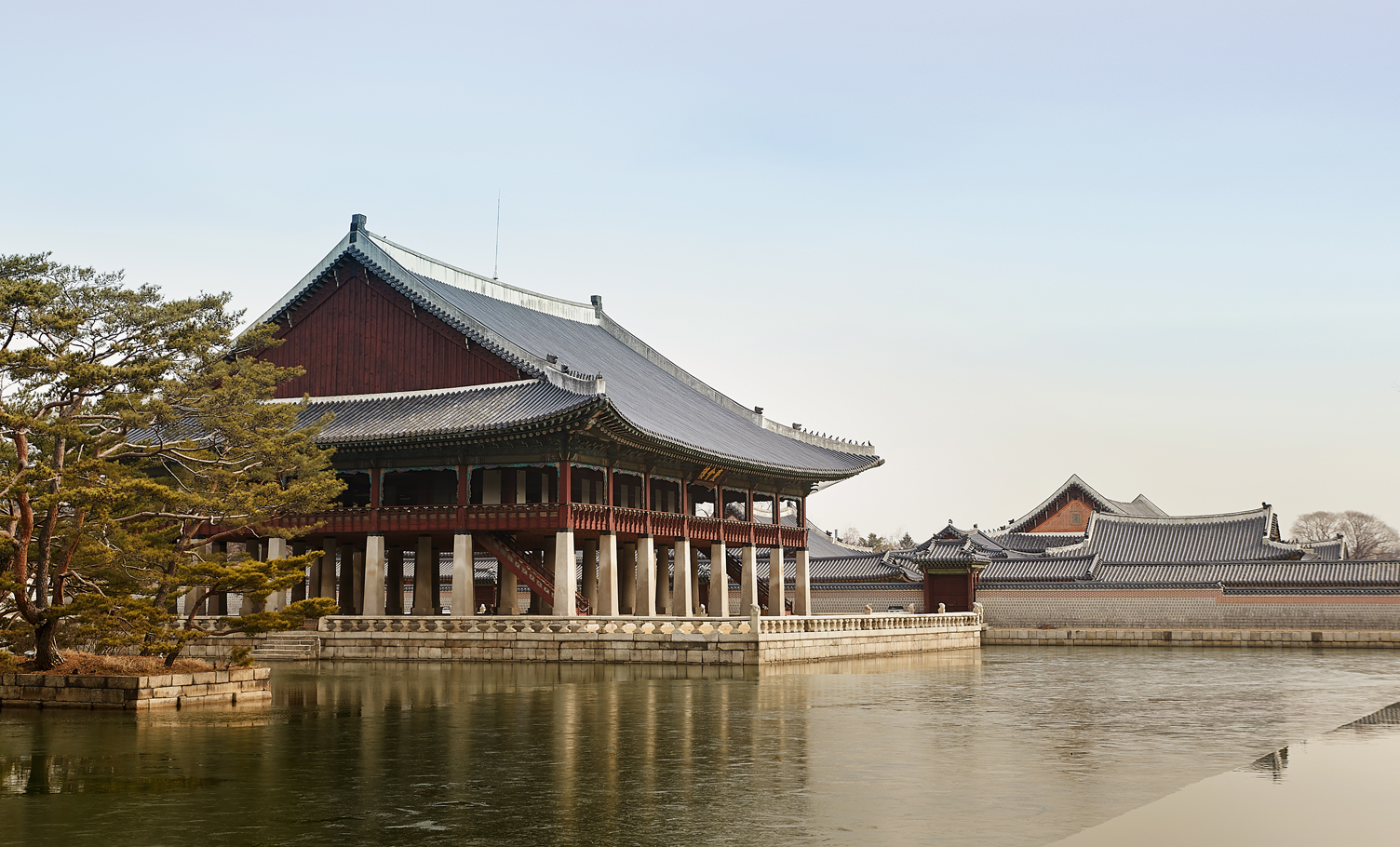
Located in front of Geoncheonggung Palace Residence, Hyangwonjeong Pavilion is where Korea’s first electricity was switched on. King Gojong is said to have directly commissioned Edison Electric Light Company for the electric work. The company built a power plant by piping water from the pond near the pavilion. The electricity was provided at the palace residence two years ahead of electric service in Japan and China, revealing the modern character of King Gojong.
Visitors who walk around the pavilion will realize that water runs very silently. The water coming out from a spring in the pavilion was used as drinking water as it was extraordinarily clean and cool. The spring has a stair-shaped structure with the watercourse bending 90 degrees twice, and the strong spout of water becomes a calm flow after the two curves. This demonstrates ancient Koreans’ wisdom to utilize nature with scientific ideas.
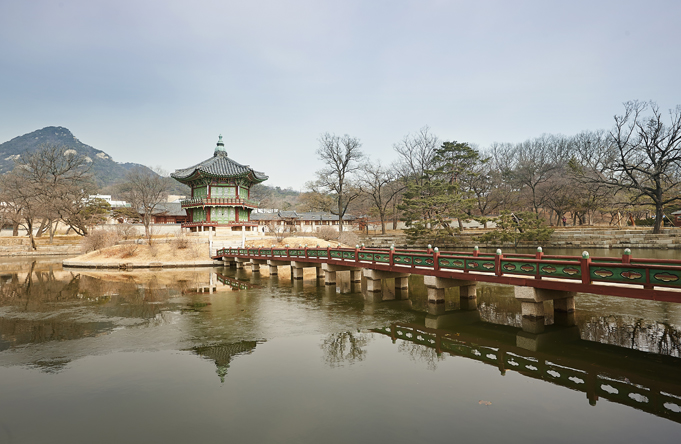
Changdeokgung Palace : nature harmonizes with architecture

This royal palace provides a good example of total environmental design of a building standing in harmony with nature,
and also embraces a Korean-style spatial atmosphere. The palace was registered as a UNESCO World Heritage in 1997.
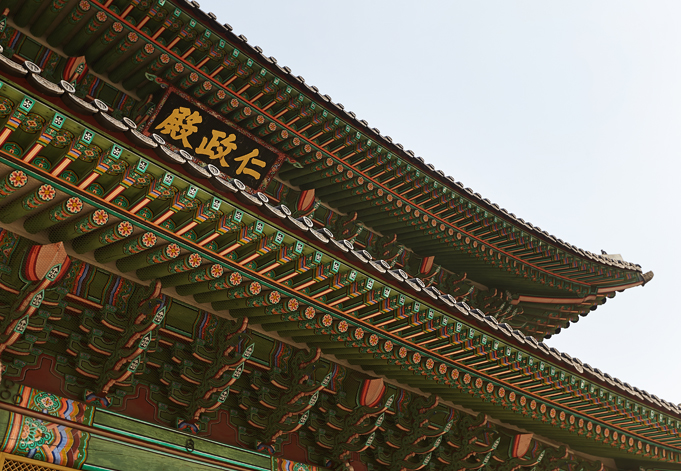
Built upon a hill, Changdeokgung does not have many flat areas. By taking advantage of these uneven topographical features, the palace has buildings in the south, placing the vast rear garden in the hilly north side. The use of natural geographical elements helped the royal palace escape the typical formal palace architecture. As a result, harmony with the surrounding natural environment has become the most remarkable charm of Changdeokgung Palace.
The stone pavement also covered the yard of Injeongjeon Hall, but it had a more even surface, unlike that in Gyeongbokgung Palace. Unfortunately, the Japanese Empire removed the stone pavement and instead covered the place with turf grass, which was usually used for graves. In 1994, the Korean government tried to restore the stone pavement but could not procure the correct stone. As a result, the place is now covered with evenly processed granite.
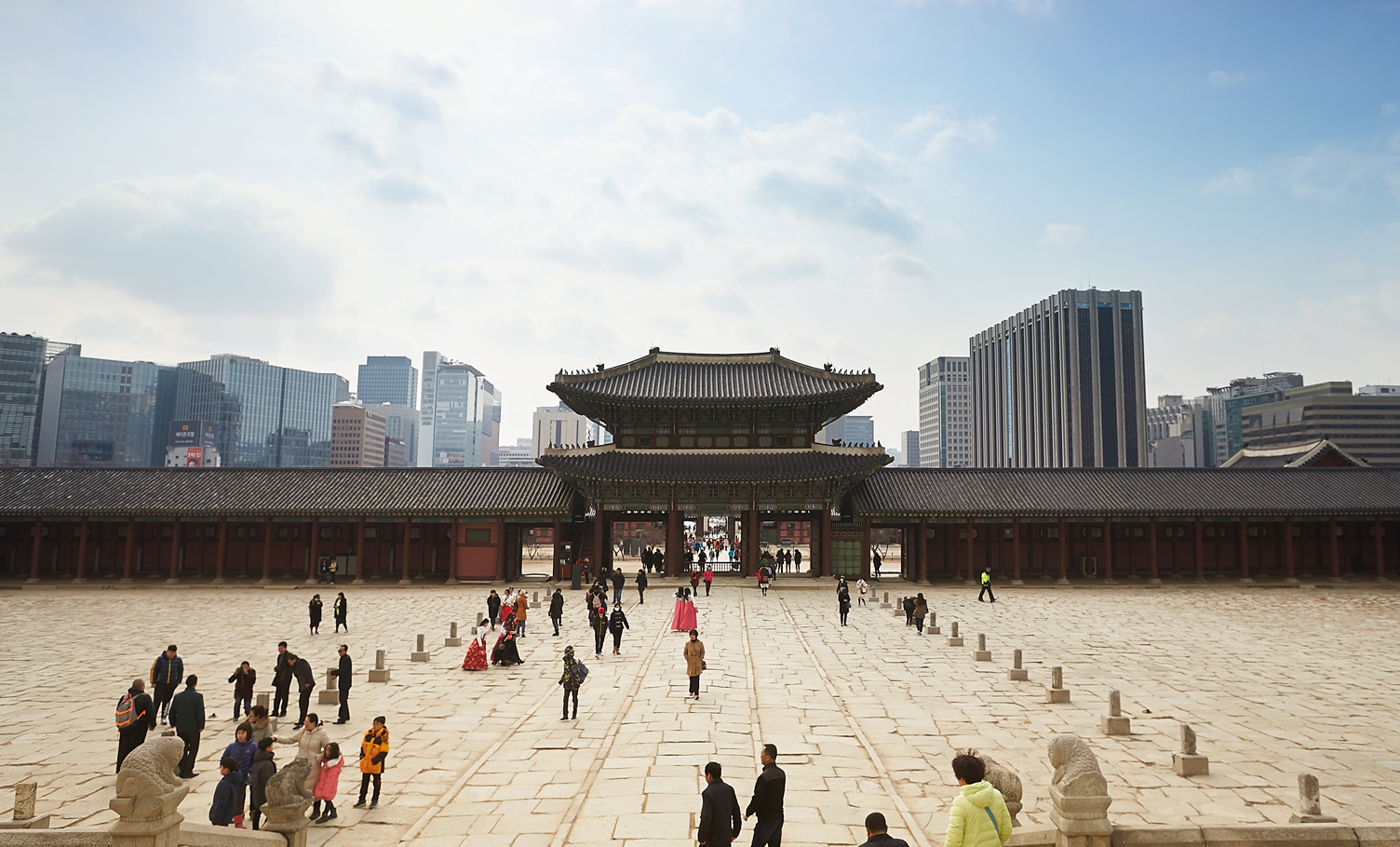
Looking at the magnificent peaceful royal palaces, visitors will be proud of their ancestors’ passion for science and practical wisdom.
